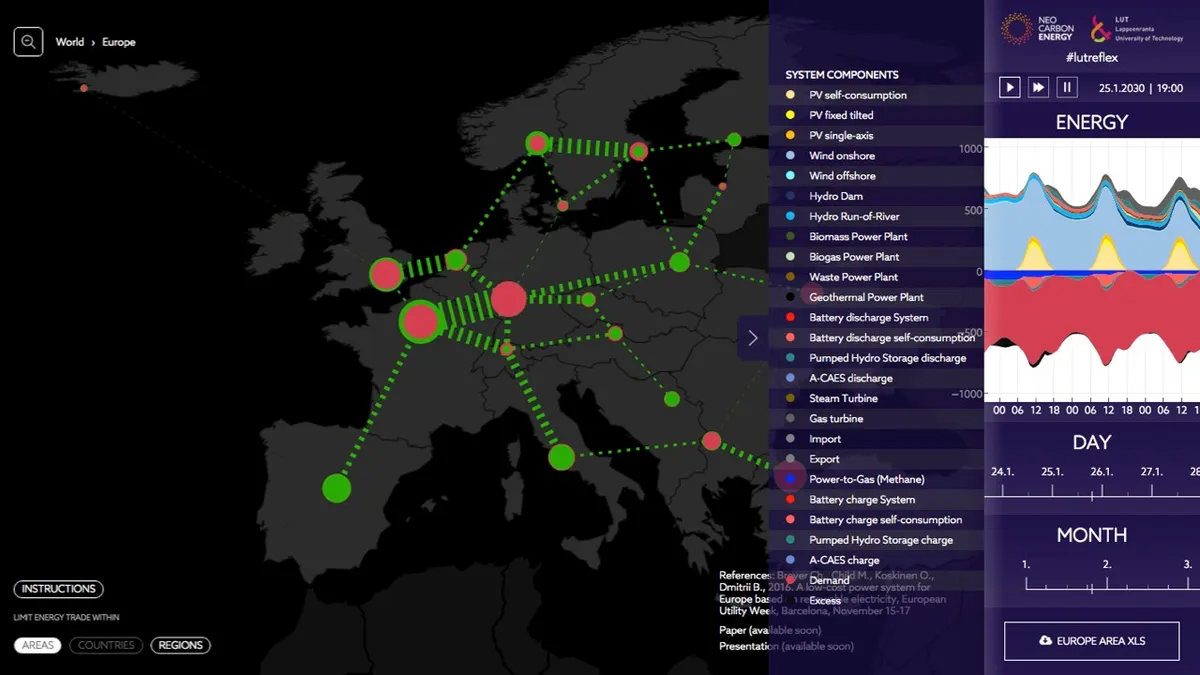With the Paris climate agreement now fully in force, nations across the globe have committed to reducing greenhouse gas emissions and minimising the growth of global average temperature to under 2 per cent. But scepticism still exists as to whether we are truly able to cut the chord of using fossil fuels to power our growing population.
Now a new model developed by Lappeenranta University of Technology (LUT) aims to answer questions surrounding the long-term use of sustainable energy by showing a fully functioning global power grid that meets the Paris climate change targets using only renewable energy sources.
The model, which you can see for yourself here, looks at the world in 2030 separated into 145 regions, showing how the energy can be distributed across the planet to meet demand at any hour of the day, all year long, as well showing from which renewable source it comes from.
"With the simulation, anyone can explore what a renewable electricity system would look like,” says Christian Breyer, LUT Solar Economy Professor and a leading scientist behind the model. “This is the first time scientists have been able to do this on a global scale."
Myth busters
One of the chief targets for producing the model is to answer some of the questions that surround the feasibility of a fully renewable future, such as stability of around-the-clock power and large base load generation. By releasing all of the data online, the researchers hope that the transparency of the results will go a long way to answering these questions and shows the world that a future which relies solely on renewables is not only possible, but affordable, with projections of global energy cost roughly between 55 and 70 Euros per megawatt-hour.

"My hope is that we can finally stop debating about these myths,” says Pasi Vainikka, Principal Scientist from VTT Technical Research Centre of Finland Ltd. “The visualisation shows exactly how a fully renewable electricity system operates. So let's just build it."
The next stage for the team is to develop the model further so that it includes the heat and mobility sectors as well as energy, and also provide solutions as to how to transition from the current energy system to a sustainable one.
Follow Science Focus onTwitter,Facebook, Instagramand Flipboard

